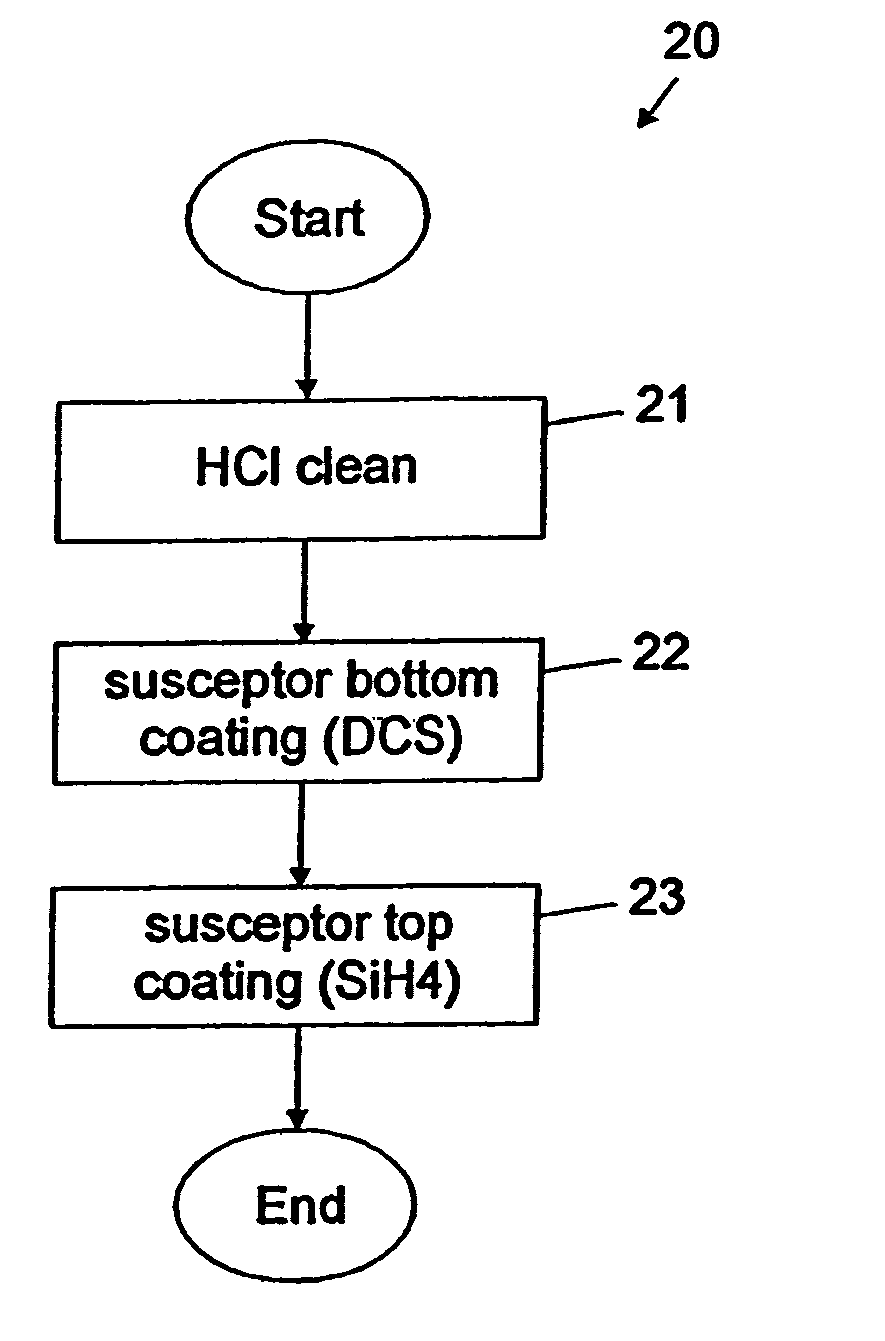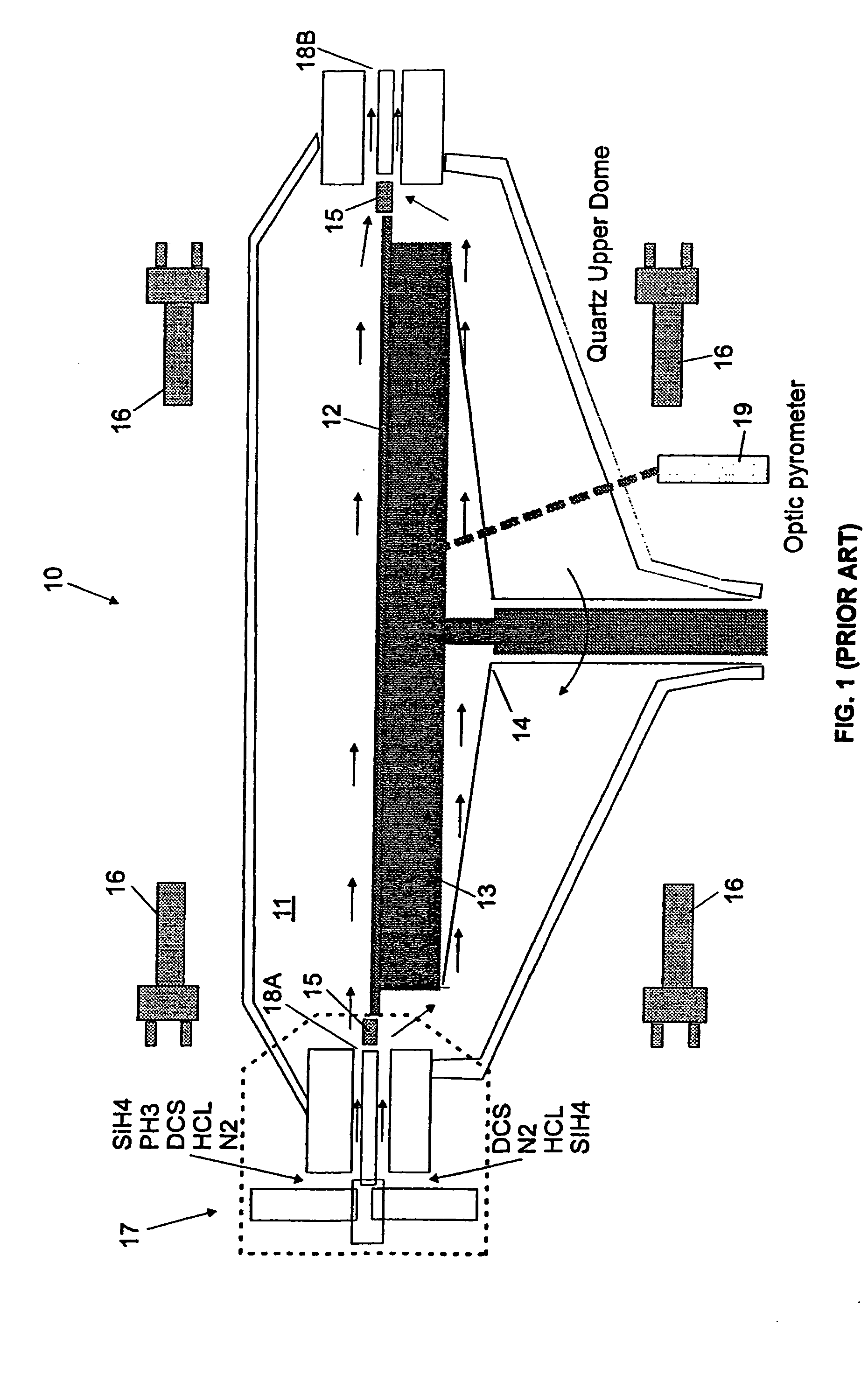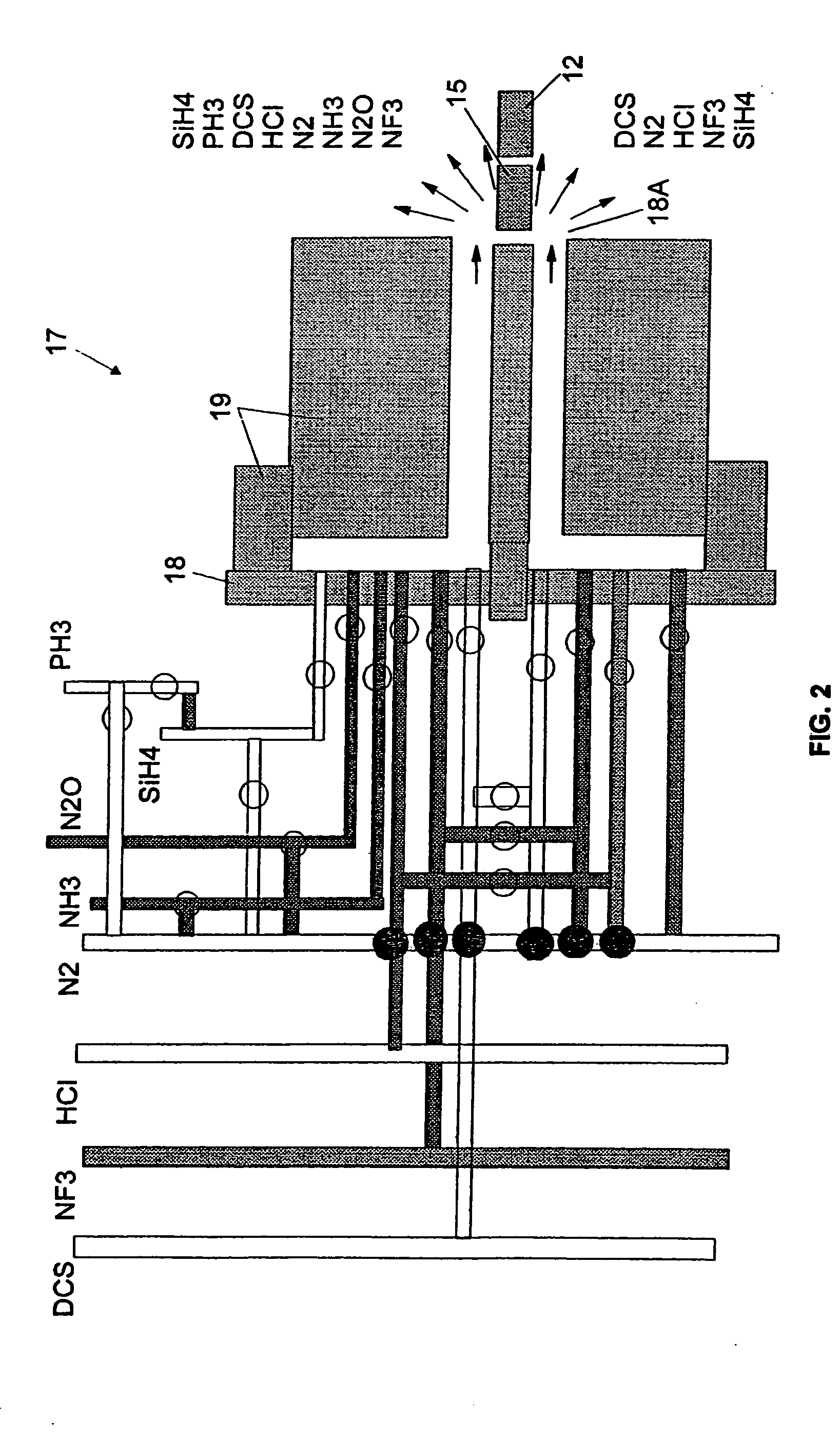Multideposition SACVD reactor
a chemical vapor deposition and reactor technology, applied in chemical vapor deposition coating, coating, metallic material coating process, etc., can solve the problems of inability to deposit sisub>3/sub>n, time-consuming operation, and device density and complexity increase, and achieve the effect of rapid thermal deposition of dielectric materials
- Summary
- Abstract
- Description
- Claims
- Application Information
AI Technical Summary
Benefits of technology
Problems solved by technology
Method used
Image
Examples
Embodiment Construction
[0055] Historically, LPCVD processes have been performed in vertical furnaces. In the past several years, new deposition tools have become available which overcome the limitations of vertical furnaces because they are single-wafer processing based systems. The SACVD Centura HTF reactor is a good example of that new generation of deposition equipments. However, it is strictly limited to the deposition of polysilicon films. It is a cold-wall reactor that uses radiant heating for thermal energy. It operates at reduced pressure and in a temperature range of 550-1200° C. (depending upon the type of operation: deposition or cleaning). FIG. 1 schematically shows the cross-section of the SACVD Centura reactor with its major elements. Now tuning to FIG. 1, reactor 10 has top and bottom walls (dome), side walls and a bottom wall that define the internal volume of the processing vacuum chamber 11 into which a substrate, typically a silicon wafer 12, can be loaded. The wafer 12 sits on a carbon...
PUM
| Property | Measurement | Unit |
|---|---|---|
| Temperature | aaaaa | aaaaa |
| Temperature | aaaaa | aaaaa |
| Thickness | aaaaa | aaaaa |
Abstract
Description
Claims
Application Information
 Login to View More
Login to View More - R&D
- Intellectual Property
- Life Sciences
- Materials
- Tech Scout
- Unparalleled Data Quality
- Higher Quality Content
- 60% Fewer Hallucinations
Browse by: Latest US Patents, China's latest patents, Technical Efficacy Thesaurus, Application Domain, Technology Topic, Popular Technical Reports.
© 2025 PatSnap. All rights reserved.Legal|Privacy policy|Modern Slavery Act Transparency Statement|Sitemap|About US| Contact US: help@patsnap.com



